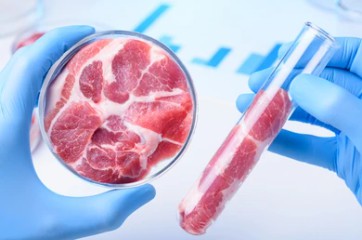Meat has become an integral part of our diet and plays an important role in the socioeconomic and cultural development of human societies. However, producing enough meat to supply a growing population comes at an ever-increasing ecological cost. The growing preference for vegetarianism and vegan diets has forced policymakers, academics, and researchers to search for a sustainable method of meat production, such as plant-based or cultured meat. Cultured meat, also known as "lab-grown meat," "in vitro meat," "synthetic meat," or "clean meat," refers to meat produced from animal stem cells and can be eaten without treatment. Unlike "fake meat" made from mushrooms, it is made only from the natural growth of animal muscle cells. Cultured meat technology is based on advances in stem cell biology (e.g., induced pluripotent stem cells) and tissue engineering (e.g., in vitro skeletal muscle transplantation). It was originally intended for medical applications but now becomes a new concept in the field of food biotechnology.

The production of meat through cell culture is an emerging technology that offers the opportunity to create meat products that are more defined, adjustable, and healthy than those available today. As a leading biotechnology company with state-of-the-art key technologies for cultured meat production, Lifeasible offers food manufacturers a full range of cultured meat production services that ensure high quality animal protein with a relatively very low ecological footprint. Our in vitro approach is considered efficient, environmentally friendly, ensuring public safety and nutritional security, and producing meat ethically.
To accelerate research and development, we work with leading experts in cell culture, scale-up, and food technology to improve the taste, texture, and nutritional value of cell-based meat alternatives. Our goal is to help our customers produce cultured meat with similar flavor, texture, and appearance to conventional meat. Lifeasible offers tailored solutions for cultured meat.
(1) Stem cells are first implanted into an extracellular matrix scaffold made of edible biomaterial.
(2) To support the metabolic activity of the cells, a medium containing nutrients such as glucose and serum is added to the bioreactor.
(3) In the bioreactor, continuous mechanical movement helps nutrients and oxygen diffuse well into the cells and removes metabolic wastes from the cells.
(4) Waiting for the cells to grow into tissue layers for harvesting and packaging.
You will benefit from our one-stop service from testing and reporting to the highest standard of post-analysis. Our experienced team of experts can help with technical issues in cultured meat production. Feel free to contact us for a quote.